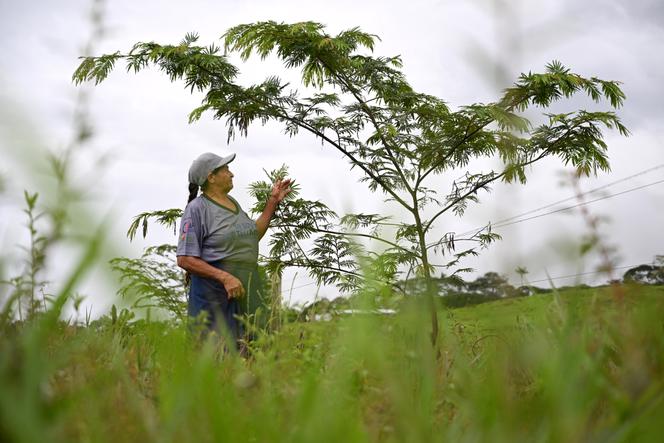


At the far edge of a vast meadow, the Amazon rainforest forms a dark line on the horizon. A few zebus graze in the distance. "When we came here 50 years ago, there was nothing but forest everywhere," recalled Pablo Emilio Olarte, 74, who lives in a wooden house in the hamlet of Guacamayas in the Colombian department of Guaviare. The occasional passing trucks stir up clouds of red dust along the track. "My father and I cleared everything with axes. Ten hectares a year for 30 years," continued Olarte. He initially raised cows, then planted coca, the shrub from which cocaine is extracted, before uprooting his coca plants and buying more cows. "Basically, I did what everyone else did," summed up the farmer. "But we eventually realized the damage we'd done, and we're trying to put it right." Olarte founded and now presides over the small 'Guacamaya Association of Ecological Farmer Breeders.'
Over half of Colombia's land (52%) is still covered by natural forest, two-thirds of which are located in the Amazon. However, the country, which had 64.8 million hectares of forest in 1990 when the first surveys were conducted, has since lost almost six million hectares. Before 1990, the authorities encouraged poor farmers to settle in the Amazon. "And until a few years ago, you had to show that you had deforested to get a loan from the bank," recalled Danilo Avila, another farmer.
For researcher Javier Revelo-Rebolledo of Bogotá's University of the Rosary, "Unlike in Brazil, where deforestation is essentially carried out by large agro-industrial operators exporting soya or meat, in Colombia, it results from the actions of a wide range of players, from small farmers to large land speculators, drug traffickers and armed groups." "The big problem here in Colombia is that the State is struggling to control its territory," added Marie-Gabrielle Piketty, an economist at the French Agricultural Research Centre for International Development and specialist in the Amazon.
East of the Andes, Guaviare, a department spanning 55,000 square kilometers – about a tenth the size of France – is a good illustration of this phenomenon. Although 85% of its land is still forested, Guaviare experienced a huge coca boom at the turn of the century. Large-scale aerial spraying of glyphosate and so-called "substitution" programs eventually pushed illicit crops to western Colombia without actually eliminating them. Colombia remains the world's largest exporter of cocaine. According to the latest report by the UN's anti-drug agency (UNODC), cocaine production exploded in 2023 to over 2,600 tonnes, a 53% increase over 2022.
You have 68.01% of this article left to read. The rest is for subscribers only.
